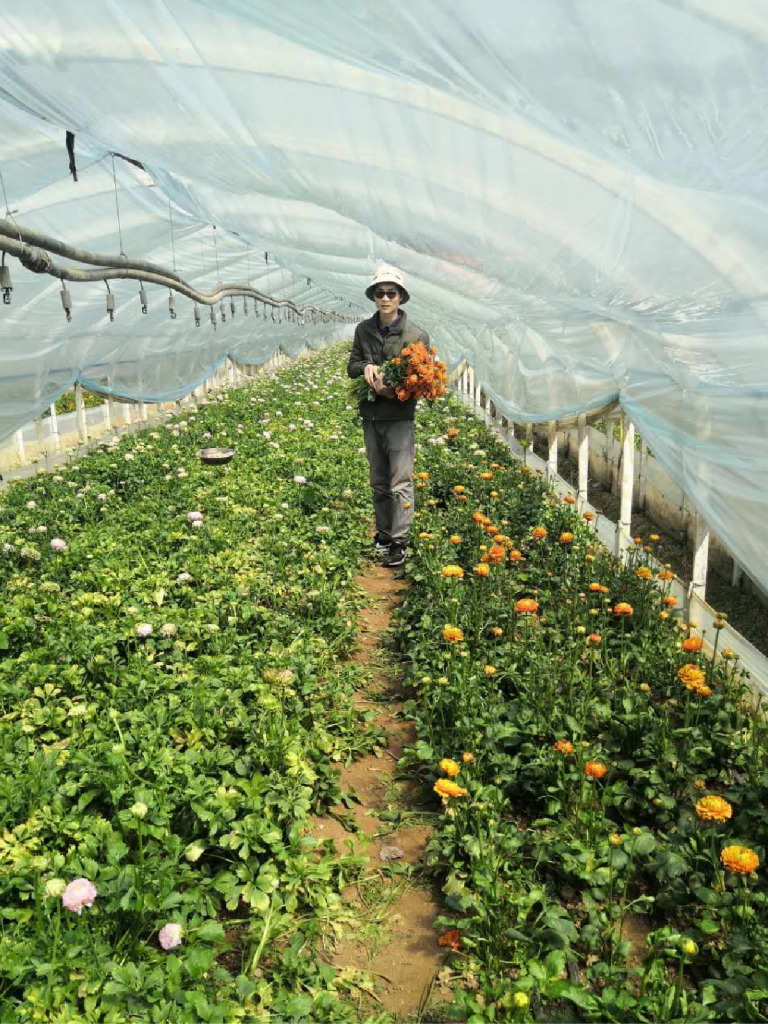A few years after Li Jinxing graduated from college, he returned to his rural hometown to become a flower farmer. The days were long but the routine familiar: rise early and tend to the blossoms in the morning; trim and package those in bloom during the afternoon; deliver the parcels, delicately stacked in trucks, to customers by late evening.
Where the flowers ended up, Li was never quite sure. From his fields in Yunnan province, China, he sold them to national distributors who sold them to flower shops who sold them to end consumers. He imagined the beautiful fruits of his labor brightening up homes around the country. This had been the life work of his family for generations. It all threatened to come to an end with covid-19.
Li, 27, remembers the exact moment he heard about the viral outbreak: it was past midnight on January 20, 2020. The Chinese New Year was only five days away, and he had spent the day harvesting flowers in preparation for the expected holiday bump in sales. As he swiped through Douyin, China’s version of TikTok, he saw a fleeting mention of the disease. Li wasn’t sure what to think. Wuhan was nearly 1,200 miles away—the problem felt distant and intangible. Days later, it snowed on New Year’s Eve, he remembers. He took it as an auspicious sign.

But as lockdown protocols swept through the country, panic began to set in. The logistics company that Li relied on had shut down for the holidays, and now the drivers were stuck at home. Without any way to carry out deliveries, Li watched as his flowers plummeted in price and still couldn’t be sold. In the end, tens of thousands of blossoms waiting in storage spoiled. “All of them had turned into trash; all of them had to be thrown out,” he says.
A week passed, and then another. Li counted the days he could still afford to pay his farmhands, the days he could still afford to keep his business. Then, on February 11, he received a message from an old friend, Ao Fenzhen, the COO of a flower distribution company. JD.com, one of China’s largest online retailers, was offering to help farmers use live-streaming to reach consumers, she said. It would involve broadcasting a few hours of content each day on its app, JD Live, to show off different products and answer questions from potential buyers. The company, hoping to attract new users, would provide access to its delivery networks—one of the few that had survived the lockdown. Did Li want to join in?
Across rural China, Li’s reality had become the new norm as the country ground to a halt. In the years before, the internet’s disruptive influence had barely touched the agriculture sector. Farmers, though used to going online in daily life via smartphones, still relied heavily on offline markets to sell their goods. As a result, in the early weeks of the outbreak, they had to throw out mounds of rotting produce even as the demand for agricultural products like groceries soared.

But amid the devastation, e-commerce giants also saw an opportunity. Farmers were desperate to try new sales channels, and consumers were being forced to shop online. An entirely new industry was there for the taking if the companies could help the farmers out.
Both JD.com and Alibaba-owned Taobao quickly launched rural live-streaming initiatives, building on the engagement-centric format that had skyrocketed in popularity in China over the previous few years. The companies helped farmers and merchants set up online stores with expedited approvals and showed them how to design the content of their broadcasts. They made their apps more intuitive and used their logistics networks to ship the products directly from farm to home.
The push was largely a bet: rural live-streaming had existed before but hadn’t truly taken off. In 2019, Taobao’s goal was to attract a mere 1,000 farmers to its platform. “Most farmers didn’t know how to live-stream; even fewer understood e-commerce,” says Zhang Guowei, the head of JD Live.
But the pressure of the crisis—and the unique scale of China’s consumer base—provided the necessary catalyst. Taobao now has over 50,000 rural live-streamers and aims for at least 200,000 more within the year. Growers who had once sold 90% of their products offline have now flipped to selling 90% online. Live-streaming has not only helped the industry weather the crisis—it’s forged an entirely new way of business that is likely to continue long after the pandemic is over.
from MIT Technology Review https://ift.tt/3claG68

No comments:
Post a Comment